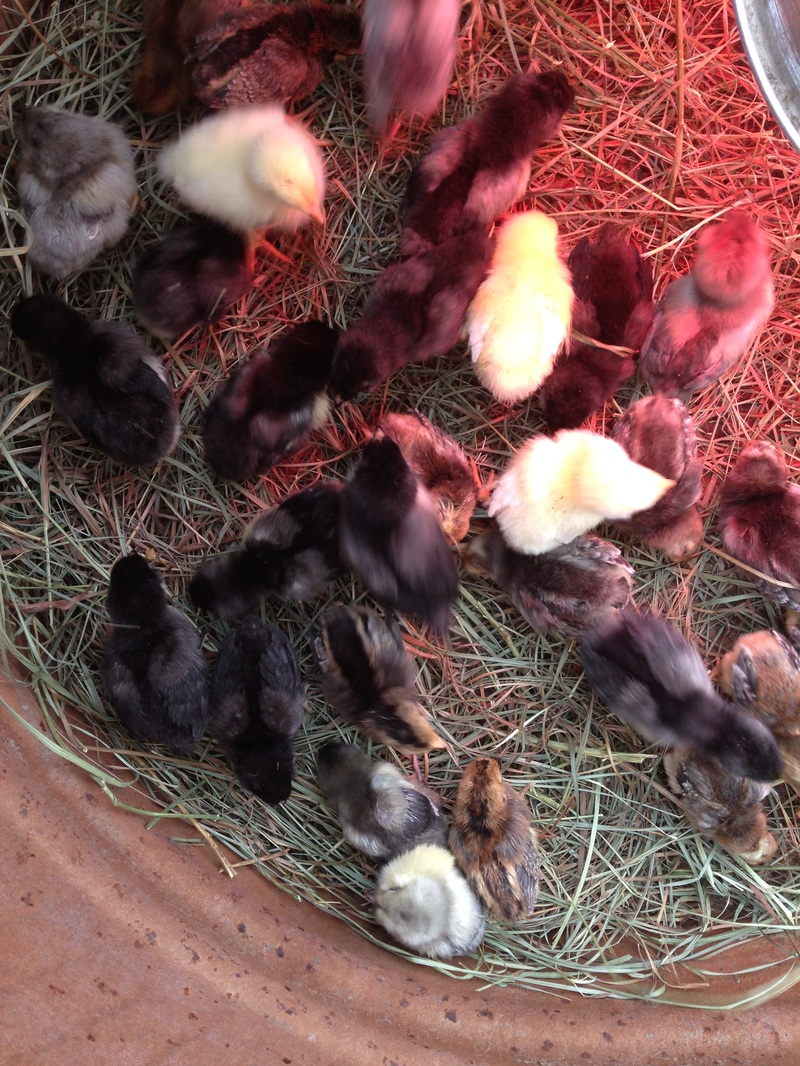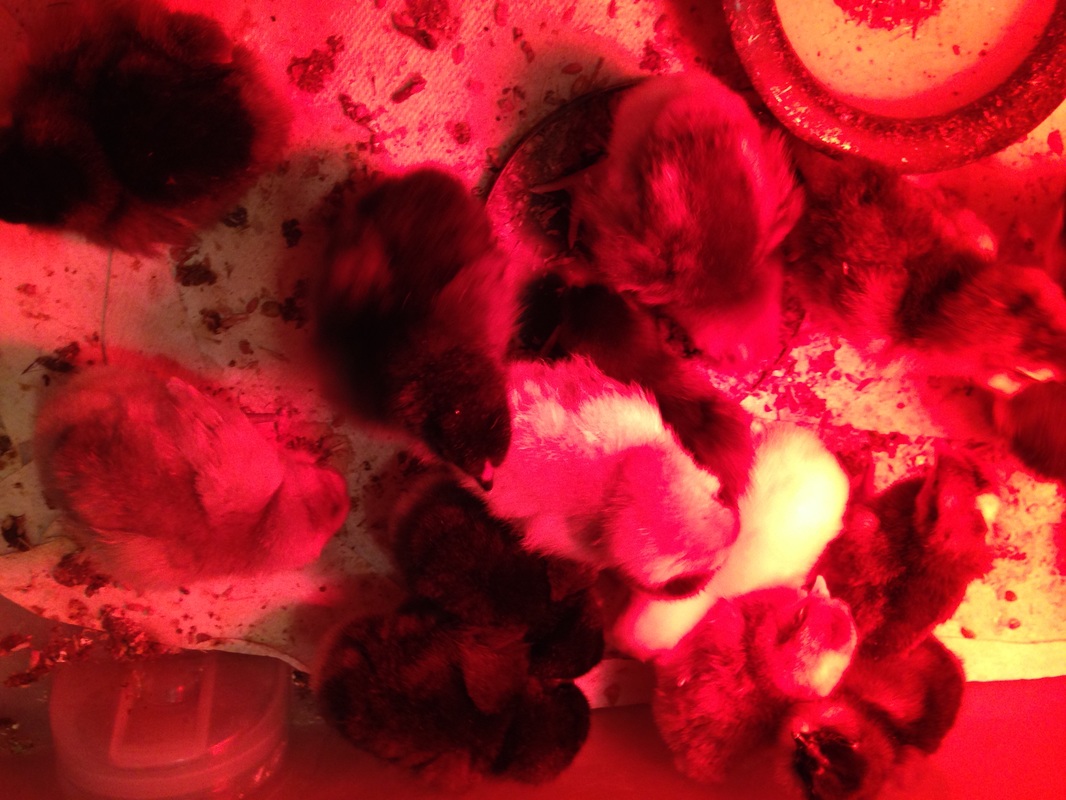Today they went to the new place, the livestock trough brooder. There are two heat lamps in the trough, in case one bulb burns out. There is real hay on the floor of the trough, a big chunk of moist sod, food and some water, though the tray on the chick waterer cracked so tomorrow a new one or two will be in order. The sod is for dirt. They need the soil bacteria to help culture their digestive system and the grit in it to grind the whole organic grain they are being fed. I have ground the grain for the first week and will do so for a bit longer, but they are starting to pick at the whole grains too.
I observe the little chicks cared for by the mother hens. The day they are hatched she calls them outside and they jump, walk, hop and manage to get to where she wants them to be, sometimes with a great deal of effort, but they do get there, nonetheless. They scratch the dirt, pick up the odd piece of grain and bits of grass and the chicks are exposed to wind, sun, rain and even snow recently. When they are cold, they peep loudly and mother hen warms them until they are calm. She warms them less and less as they develop their feathers and can begin to regulate their own temperature better.
I have had great success with the livestock trough brooder.This old trough was free because it has rusted through in two places. I posted an ad looking for one and the gent was pleased to have it gone, as it was no longer useful to him for his cows. It is large. I have a smaller one too, and this year it is set up beside the bigger one, for goslings and ducklings when they hatch in the mom's nests. I cannot allow them to free range with their parents because the ravens eat them. There are three geese on about 30 eggs.
After the chicks are out of the brooder, they go into a hoop coop with a heat lamp still in case of a chill. The hoop coop is 8 x 10 feet to provide ample growing room and it is movable, but the chicks all have to be caught and caged for moving. The geese and ducklings follow a similar path.
These chicks are top of the line Ameraucanas, Cream legbars (and both those breeds lay blue eggs) and there are 3 white Chanteclers too. I am going to mix them with my existing chickens of those breeds, plus the Partridge Chanteclers I already have. My aim is to create a wonderful, hardy, foraging flock that will lay eggs and raise chicks from year to year. I think this will be my last influx of new chicks for some time and from now on, just a new rooster will likely be added.
And to think, upon moving here, I suffered a true bird phobia and was deathly afraid of chicks and chickens, well, all birds to be exact. It took 3 years to fight that phobia and I can finally say, it is gone. Now...back to check on the chicks.



 RSS Feed
RSS Feed